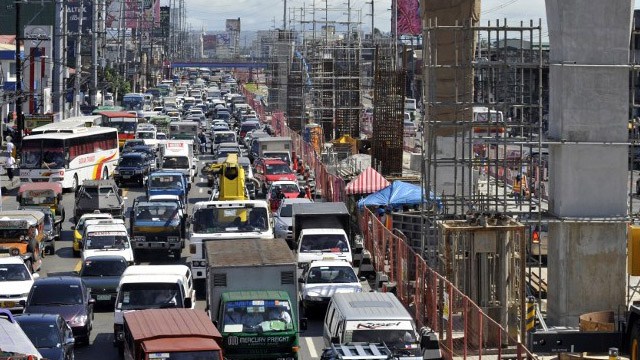SUMMARY
This is AI generated summarization, which may have errors. For context, always refer to the full article.

MANILA, Philippines – A new working paper by an economist at the International Monetary Fund (IMF) shows that the Philippines could almost double its current growth over the next 15 years if it improves its public investment efficiency.
In a working paper entitled “Improving public infrastructure in the Philippines,” IMF economist Takuji Komatsuzaki said that improvement in public investment efficiency generates substantial benefits.
“Assuming half of the inefficiency is eliminated in 5 years, the increase in real GDP after 15 years is 9% to 11%,” he said. “Improving public infrastructure leads to gains in productivity, which crowds in private investment.”
The country’s GDP growth slowed down to 5.8% last year from 6.1% in 2014 due to weak global demand and lack of government spending.
This underspending was estimated at P526 billion ($11.13 billion) from 2011 to 2014.
Efficiency boost
The paper showed, however, that the difference in public infrastructure contribution is sizable because of the Philippines’ current large efficiency gap.
For example, given the 40% assumed inefficiency, the 5% of GDP public investment results in only about 3% of GDP contribution to public infrastructure, Komatsuzaki said.
When public investment efficiency is improved to just 20% inefficiency, the same 5% of GDP public investment results in over 4% of GDP contribution to public infrastructure, leading to a cumulative increase in GDP of 9% to 11% after 15 years, he explained.
Weaker investment
The study noted persistently low public investment in the Philippines averaging 2.5% of GDP between 2000 and 2014 – the lowest among member countries of the Association of Southeast Asian Nations (ASEAN).
The Philippines also had one of the lowest public capital stock at 35% of GDP in 2013, compared with the ASEAN average of 72%.
The Aquino administration, however, has committed to raise infrastructure spending to 5% this year from around 3% in 2014. It has also placed emphasis on public-private partnership (PPP) projects.
The country has also made steady progress in governance and fiscal transparency based on the yearly improvement of its relative ranking in the World Governance Indicators of the World Bank since 2010.
But the paper noted a need to further strengthen institutions to improve public investment efficiency as initial results of the Public Investment Management Assessment (PIMA) framework showed stronger planning and implementing phases but weakness in the allocating phase.
Improvement through debt or higher taxes
Komatsuzaki outlined two scenarios to boost public investment in infrastructure in the paper.
The first is a permanent increase in public investment by 2% of GDP financed by borrowing, while the second is the same increase in public investment financed instead by higher taxes.
Both generate different macroeconomic effects in the short run.
In the first, financing through debt scenario results in a substantial increase in the public debt to GDP ratio, while the tax financing scenario results in its slight decrease.
The Philippines is currently in a good position in terms of debt to GDP ratio, with Finance Secretary Cesar Purisima calling it the best in 18 years.
The paper noted, however, that an increase in public debt raises the borrowing cost and constrains investment over time.
In contrast, the tax financing scenario initially lowers consumption, which has been the backbone of the economy in recent years, because an increase in consumption tax will lower households’ disposal income, Komatsuzaki said.
The imposition of higher taxes would also seem difficult with the government recently resisting calls for income tax rates to be lowered.
The IMF and other international institutions like the World Bank have pointed out though that the current tax system’s problems have to do with collections, and the country urgently needs to broaden the tax base.
The paper concluded that while output gains are initially higher in the deficit-financing scenarios, these gains become higher in the tax-financed scenarios over time because of the increase in the government’s borrowing cost in the first scenario.
More public revenue needed
With a low capital stock and a fast-growing young population, the IMF previously said that addressing the large infrastructure gap is needed to raise potential growth and reduce poverty.
Komatsuzaki said that continued efforts to mobilize revenue will be critical, including enacting measures to offset any revenue-eroding policy changes, preferably through comprehensive tax reform.
This, he added, is “especially urgent given the need to ensure debt sustainability amid the large spending needs in other priority spending areas for inclusive growth.” – Rappler.com
$1 = P47.62
Add a comment
How does this make you feel?
There are no comments yet. Add your comment to start the conversation.